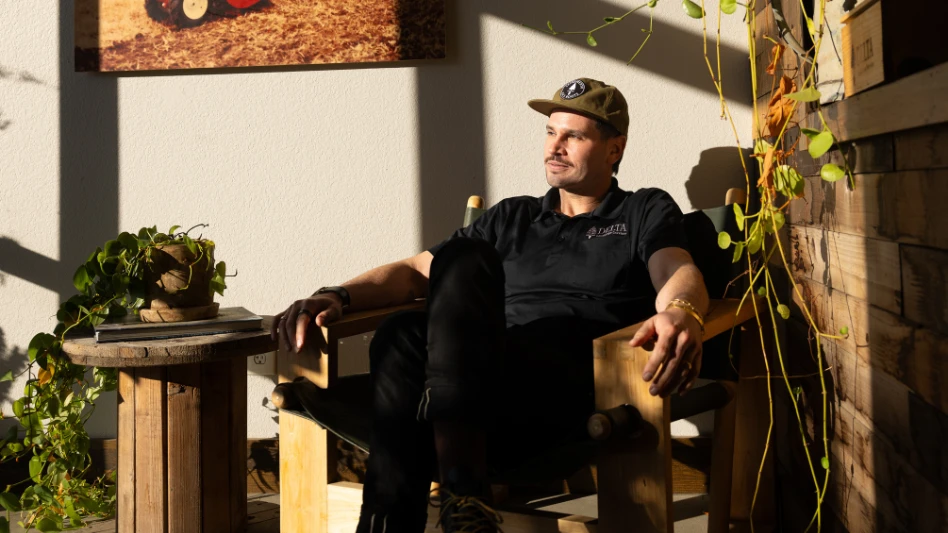Some see it as an indispensable landscaping tool, while others attack it as an evil intrusion into a peaceful suburban existence. But no matter how it’s viewed, one fact is consistent: the power blower and its surrounding controversy is putting plenty of pressure on the equipment industry to meet both regulations and consumer expectations. The law of evolution applies here – adapt or else. Matt Wilson, technical service manager, Maruyama U.S., based in Redmond, Wash., summarized the situation succinctly: "You’ve got to do something or give up on the market."
THE DEBATE UPDATE. The power blower issue is as contentious as ever, despite what some had hoped. "Two or three years ago, no one was paying attention to this," said Robin Pendergrast, vice president of the International Marketing Exchange, McHenry, Ill., and a leading advocate for the power blower industry. "Contractors and manufacturers thought it would blow over."
Quite the opposite. One of the most recent bans was just passed in Palo Alto, Calif., where all gas-powered blowers in residential areas have been outlawed, effective July 2001. Under the ban, which Pendergrast said he considers an especially devastating blow for blowers, only electric blowers are permitted during restricted hours. "This ordinance is not going to be overruled," he said, noting that the city has been contemplating a ban for the past decade and did not outlaw blowers impulsively. "And if a ban can happen in Palo Alto, it can happen anywhere."
Randy Haslim, vice president – technical for Tanaka, Kent, Wa., agreed. "The ‘no blow’ movement is going to continue to grow – there is no doubt," he said. This fact has become increasingly clear to manufacturers, who are scrambling to make their power blowers more earth- and, especially, ear-friendly while trying to maintain commercial and cost effectiveness.
| MIND YOUR |
|
MANNERS
All too often, blowers have been cast as noisy villains in neighborhoods across the country. One way to improve this often unfair image is by encouraging proper, courteous use. Nine tips to remember:
Information courtesy of the Portable Power Equipment Manufacturers Association |
BUILDING A BETTER BLOWER. Re-configuring blowers to meet both regulatory, consumer and commercial contractor demands is a challenging task. One of the primary concerns is maintaining a powerful air force, which is inherently noisy, while reducing the decibel level at the same time. "‘How do you generate enough cubic feet per minute and miles per hour to do the work that’s required at a quieter level?’ This is the big question," said Kim Liechty, Husqvarna Forest and Garden’s director of engineering.
This question can sometimes be an issue of compromise, pointed out Marty Koval, director of U.S. sales for Shindaiwa, Tualatin, Ore. "There are always tradeoffs," he said. For Shindaiwa, reducing noise while striving to maintain performance and reliability at the same time has always been a primary concern, he said.
While Husqvarna, based in Charlotte, N.C., currently has a line of blowers meeting or exceeding Environmental Protection Agency (EPA) and California Air Resources Board (CARB) standards, they’re always looking to improve. The company has backpack and hand-held blowers in development that will have a dBA rating "significantly below 65," Liechty said.
Another obstacle for manufacturers is user education. In the past, Husqvarna has offered quieter products in its line, but it fell victim to a common misconception, Liechty said. "The user equated sound with power and they just didn’t sell well."
Maruyama realized that noise was becoming a serious concern in residential areas about half a decade ago, which was a huge incentive to go back to the drawing board, Wilson said. Like many manufacturers, he added, Maruyama started focusing on how it could reduce noise.
In addition to its landmark 62 dBA packback blower, which has been especially well-received in California, Wilson said, Maruyama will have a CARB Tier II-compliant backpack blower on the market by late fall. The unit is still in the prototype stage with the company aiming to bring the sound level below 60 decibels, Wilson said.
In addition, Tanaka plans to introduce a low noise, commercial backpack blower this spring. "We’re targeting 62 dBA," said Haslim, who admitted the company’s blower technology was a little antiquated and ready to be revamped.
RedMax, Atlanta, Ga., also has a quieter blower in development. While its current blowers run at 75 or 65 dBA, the company will be introducing a new line of gas-powered products in the next few years, equipped with a lower rpm to bring the decibel level down, said Don Kyle, RedMax’s vice president of marketing.
Regarding the issue of power blower performance, the equipment industry as a whole will readily admit that there is still plenty of room for improvement in the machines. "We recognize that blowers need to be cleaner and quieter, and we’re working on some solutions," commented Karen Hutchinson, director of operations, Portable Power Equipment Manufacturers Association (PPEMA), Bethesda, Md. "Obviously, the industry wants to be as responsive to these issues as possible. Now, it’s just a question of the technology catching up with the demand."
| ALTERNATIVE |
|
ON THE HORIZON
By eliminating emissions and reducing operating noise to an unprecedented 56 dBA, Echo’s innovative new alternative energy blower is positioning itself as the power blower of the future. In development for the past two years, Echo, based in Lake Zurich, Ill., came up with this electric blower in response to and in anticipation of a need to provide a quieter product with zero emissions, according to Larry Will, Echo’s vice president of engineering. Specifically, the company wanted to target individuals affected by the increasing number of power blower bans throughout the United States. "We were looking into the future," Will said. "Our feeling was that if we could develop a product that performs adequately and was attractive financially, we may have a product for those people." Echo approached the development of this blower with two objectives in mind. The first was a desire to get an even distribution of battery power for a sustained amount of time. "We initially looked at using a lead acid battery, but found that the performance deteriorated as soon as it was drawing power," Will said. Echo then tried a nickel metal hydride battery, which performed better and got consistent voltage. "With the nickel metal hydride battery, the electric blower can run 40 minutes on a charge, compared to one with a lead acid battery that deteriorates after about nine or 10 minutes," he observed. For the sake of safety and energy conservation, Echo also wanted to control the battery’s output, so it equipped the battery with a computer that allows the user to adjust both voltage and rpm. While the blower’s innovation is impressive, the price tag isn’t, and Echo will be the first to admit this. Preliminarily priced at approximately $2,300, this cost includes three batteries at $700 each – one to use while the other two are recharging. "From an initial cost standpoint, this is not attractive to the professional user," Will admitted. "But if a person wants to use this blower all day, he’s going to need a minimum of three batteries." Will also noted that this new blower is not a replacement for the more demanding clean-ups. "It would be adequate for blowing grass and leaves but not for major parking lots," he said. With the second generation prototype currently undergoing testing, Echo is still fine-tuning the blower and hopes to have it on the market in five to 10 years, Will predicted. In the meantime, the company is waiting to see if there’s enough of a market demand to justify further investment. "I don’t know if there will be enough business out there to warrant spending another $2 million to put this into production," Will admitted. "It’s kind of a Catch-22. You have to sell a lot of product to get the price down." |
CHANGING THE APPROACH. Without question, proper blower usage goes hand-in-hand with improved blowers. Without responsible operation, an improved blower is fairly useless. Blower manufacturers and industry associations are addressing this issue by educating landscape contractors (See "Mind Your Manners" on page 146).
The fact is that many landscape contractors simply don’t operate power blowers in a courteous manner, blasting them at full throttle for hours on end and running them at all hours of the day. The solution, however, is simple. "Common sense will solve the problem all the way around," Kyle said.
PPEMA hopes an instructional video will help the situation. In partnership with the Bay Area Gardeners Association and the California Landscape Contractors Association, PPEMA’s video, slated for release this spring, will address all aspects of proper blower operation – from routine maintenance and safety procedures to proper protective gear and usage etiquette. The video also will include a test so contractors can make sure their employees are getting the message.
Raising conscientiousness takes time, but the industry is gradually getting there. "A lot of contractors have become painfully aware of the noise they create and have taken steps to curb that," said Haslim.
As determined by the American National Standards Institute (ANSI) standard, the only national standard for measuring power sound, PPEMA also has been working on improving the variables in decibel ratings as well as revising test procedures for greater consistency. As part of that goal, PPEMA is encouraging manufacturer participation in its voluntary labeling program, launched in 1997 that indicates a blower’s decibel level directly on the piece of equipment. "We feel that this is something that the industry should be doing," Hutchinson said. These straightforward labeling standards could help cities regulate more intelligently and contractors serve their residential customers more courteously, Hutchinson said. The standards are:
- Category 1 – 65 dBA or less
- Category 2 – greater than 65 dBA or less than or equal to 70 dBA
- Category 3 – greater than 70 dBA
Labeling blowers could put the blower manufacturing industry in a better light. "In the past, we’ve been seen as a ‘Big Bad Wolf,’ but this will show that we’re trying to do our part," said Nick Jiannas, Stihl’s product manager for power tools, Virginia Beach, Va.
For the power blower industry, Hutchinson admitted that the noise issue has taken a backseat to complying with more pressing exhaust emission regulations, namely the EPA Phase II/CARB Tier II requirements.
"Clearly, everyone recognizes that noise is important," she says. "But when you have only so many engineers working on the issue, there are only so many things you can do at once – but we’re working on it."
The author is Associate Editor of Lawn & Landscape magazine.

Explore the March 2000 Issue
Check out more from this issue and find your next story to read.
Latest from Lawn & Landscape
- Wilson360 adds Daniel Grange as new consultant
- Batman and business
- CH Products releases new tree stabilizer
- Savannah Bananas founder Jesse Cole to speak at Equip Exposition
- Catch up on last year's Benchmarking report
- Davey Tree promotes Kevin Marks as VP of Western operations
- Bobcat Company names 2025 Dealer Leadership Groups
- Green Lawn Fertilizing/Green Pest Solutions awards employee new truck for safe driving





